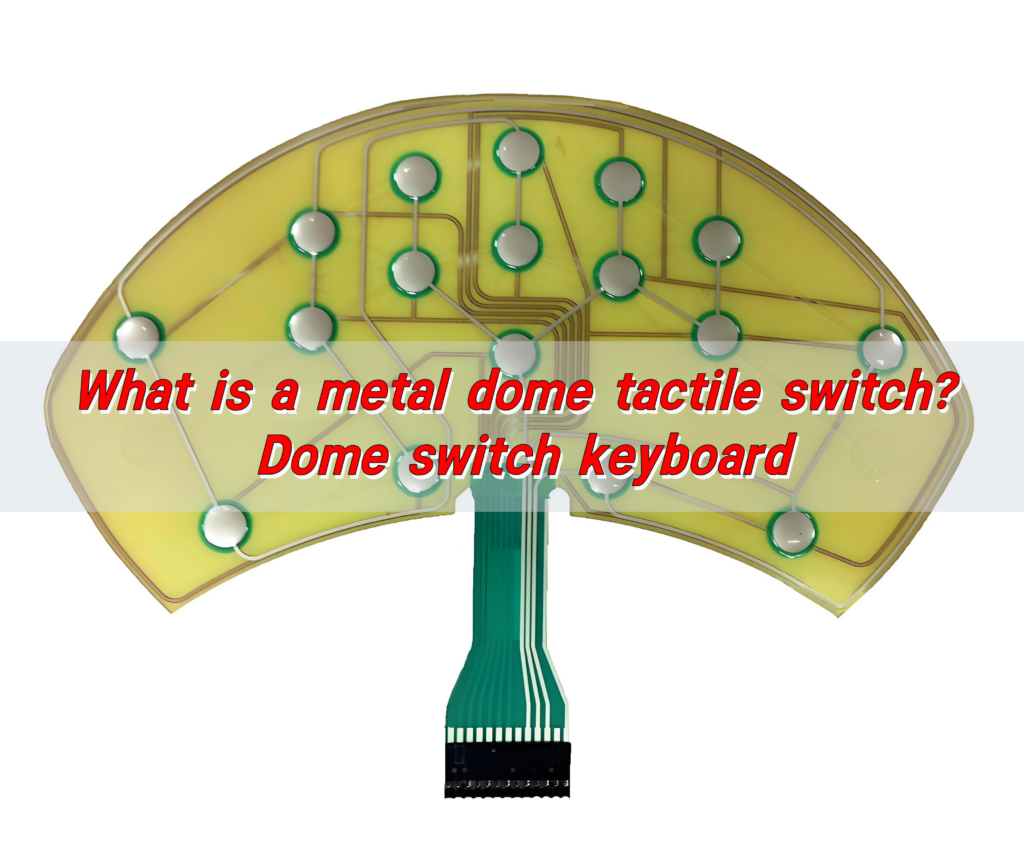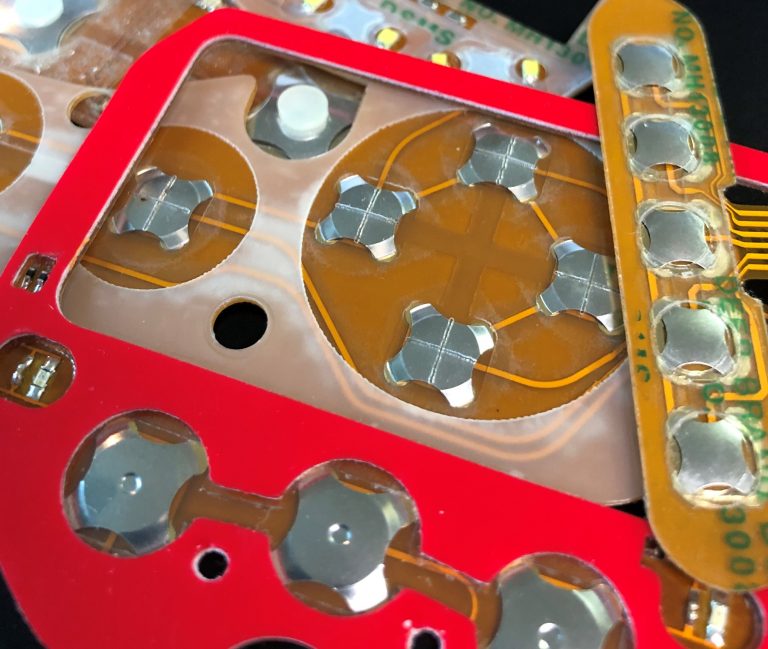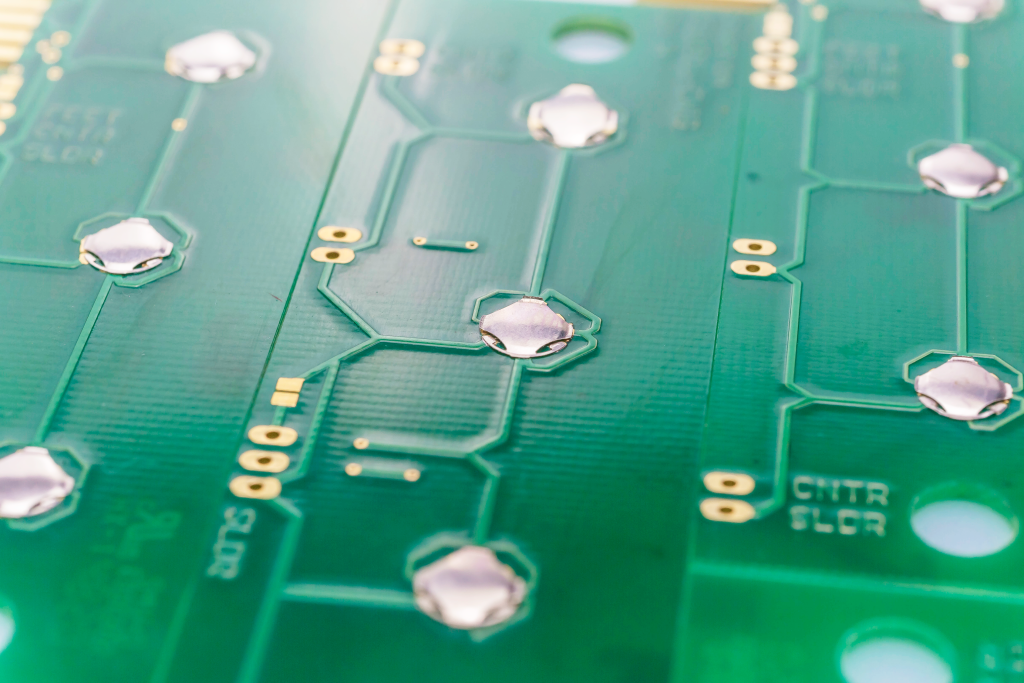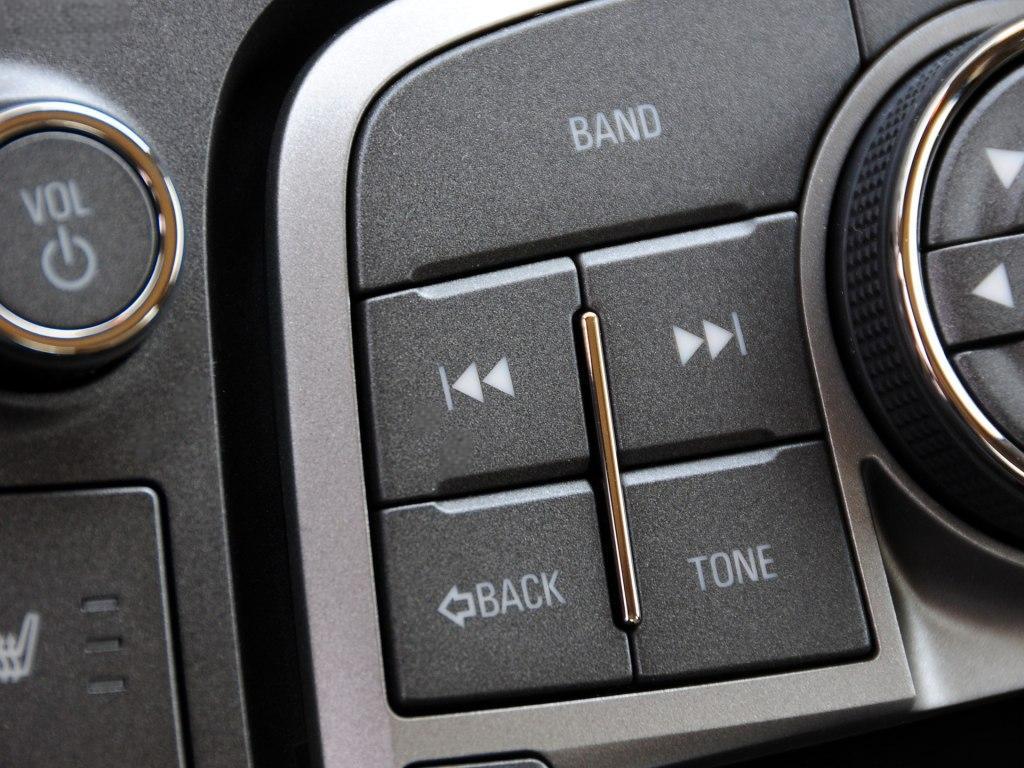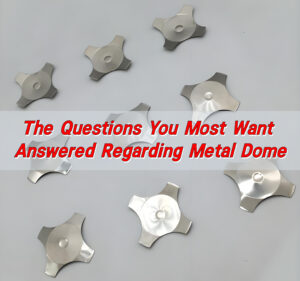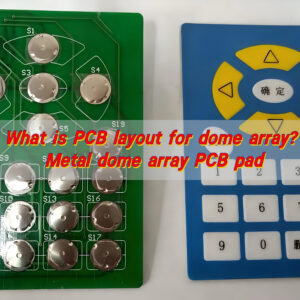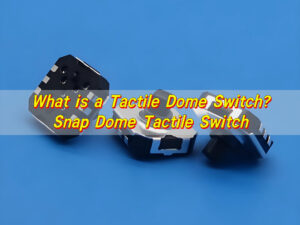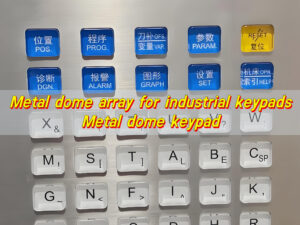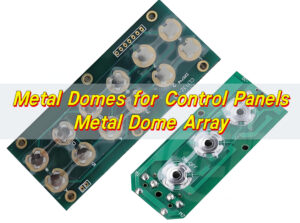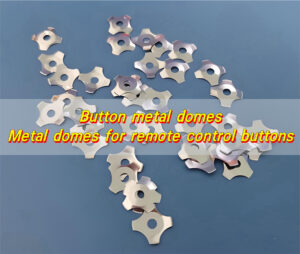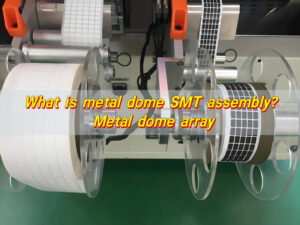The metal dome tactile switch is a switch that uses the elastic deformation of the metal dome to provide tactile feedback. When the key is pressed, the metal dome deforms and contacts the circuit board, forming a conduction; when released, the dome returns to its original shape and the circuit is disconnected. This type of switch has good tactile feedback and durability, and is widely used in membrane keyboards, control panels and other equipment.
What is a tactile dome switch?
Tactile dome switch is a small mechanical part that creates a noticeable click when pressed. This click is not just a sound. It’s a tactile feedback that your fingers can feel.
Inside the switch, a metal dome bends under pressure and snaps back into place when released. This movement sends a signal to the device, telling it that a command has been made.
The beauty of the tactile dome switch lies in its simplicity and responsiveness. It offers users a crisp, unmistakable feeling with every press. Whether you’re operating a medical device, a control panel, or a handheld gadget, the tactile dome switch ensures you know your input was received.
What are rubber dome switches?
These are different but often confused with metal domes. A rubber dome switch uses a soft silicone or rubber material that deforms when pressed. Instead of a crisp snap, the feedback is softer and less distinct.
Rubber dome switches are usually found in cheaper keyboards, calculators, and basic electronics. They are easier and cheaper to produce. However, they often wear out faster, and the feeling of the press becomes mushy over time.
Rubber domes rely on the elasticity of the rubber itself. Over time, as the rubber degrades, the performance drops.
Are rubber dome switches tactile?
Rubber dome switches are technically tactile because they offer some form of feedback when pressed. However, the feeling is much softer and less crisp compared to a tactile metal dome switch. Instead of a sharp snap, you get a muted, spongy resistance.
For applications where clear, immediate feedback is critical, rubber dome switches often fall short. This is why so many industries lean toward metal dome switches.
How does a tactile metal dome switch work?
The operation of a tactile metal dome switch is both elegant and efficient. At its core, the metal dome acts like a spring.
When you press the dome, it collapses slightly and makes contact with a circuit underneath. This completes the electrical path, sending a signal to the device. When you release it, the dome springs back into shape, resetting the switch for the next press.
The design is so clever that it combines mechanical movement and electrical contact in one compact unit. This leads to quicker responses, longer life spans, and greater reliability compared to other switching methods.
What are the advantages of metal dome tactile switch?
First, they deliver that unmistakable tactile feedback. Each press feels deliberate and satisfying. This is especially important in critical environments where every action must be confirmed instantly, like in medical equipment, military devices, or industrial controls.
Second, tactile dome switches offer outstanding durability. Most metal domes can withstand millions of actuations without losing performance.
Another huge plus is their customization. Metal domes come in different shapes, sizes, and actuation forces. Manufacturers can design the feel exactly as needed, creating a user experience tailored to specific applications.
Also, they offer low resistance and high sensitivity. This improves device responsiveness and boosts overall performance.
Most importantly, metal dome switches look and feel premium. When customers interact with products that use tactile metal dome switches, they feel quality right at their fingertips. And that feeling matters.
What is a dome switch PCB?
Dome switch PCB (printed circuit board) is the platform where metal domes are mounted. It plays a critical role in ensuring the switch works properly.
The PCB features conductive traces arranged to interact with the metal domes. When the dome is pressed, it bridges the gap between traces, completing the circuit.
Many dome switch PCBs include a spacer layer and a top overlay, which together protect the domes and add structure to the assembly. This design also helps prevent dust, moisture, and contaminants from affecting performance.
PCBs can be flexible or rigid, depending on the application. Flexible PCB options are perfect for compact devices where space-saving designs are crucial. Meanwhile, rigid PCBs offer more stability for heavy-duty applications.
What is the difference between dome switch and membrane switch?
A dome switch, especially a metal dome tactile switch, relies on a mechanical dome to provide tactile feedback. It gives users that sharp, satisfying click. It’s physically more pronounced and offers a clear actuation point.
On the other hand, a membrane switch typically uses flat layers of plastic film. When pressed, the layers make contact to close the circuit. Some membrane switches incorporate a dome to enhance tactile feel, but many are flat and offer little to no tactile response.
In short, dome switches focus on feedback, while membrane switches focus on simplicity and cost-saving. Devices that need to combine performance with a premium feel often choose dome switches for their obvious benefits.
Where are metal dome tactile switches used?
In medical devices, clear feedback can literally save lives. In industrial controls, operators must rely on instant feedback to ensure machines work safely and efficiently.
Military equipment also uses snap dome switches because they are rugged, reliable, and resistant to extreme environments.
Everyday consumer products, from remote controls to car dashboards, use dome switch buttons to deliver a superior user experience. Even in wearable technology, where every millimeter matters, manufacturers trust the slim profile and reliability of tactile domes.
Gaming equipment, mobile phones, and fitness trackers also love tactile domes. They offer durability, fast response, and a quality feel that users remember.
The truth is, if a device needs a button that feels good, lasts long, and works perfectly every time, a metal dome tactile switch is often the best choice.
Conclusion:
Whether in a dome switch keyboard, a critical medical device, or a rugged control panel, tactile dome switches stand out as champions of user experience.
If you’re looking for premium quality, unbeatable performance, and a tactile feel that leaves a lasting impression, there’s no better choice than a metal dome tactile switch.
For more information, or to find the perfect metal dome solution for your project, feel free to reach out to us at sales@metal-domes.com


